| The occurrence of sharks of the genus Heterodontus from the Holocene to the Eocene in Japan |
| Holocene (Plate 1) A single tooth of the japanese bull head shark was obtained from the Holocene of the east side of Tokyo Bay area. |
| Pleistocene (Plate 2, Plate 3) Both of the two sites examined yielded abundant fossil teeth of Heterodontus japonicus. The Dainichi Fomation, Kakegawa Group, Shizuoka Prefecture also yielded abundant fossil teeth of Heterodontus zebra. |
| Pliocene (Plate 4, Plate 5) Fossil teeth identified as the same as those of Heterodontus japonicus were found at the two sites examined. The Naarai Formation, Chiba Prefecture also yielded fossil teeth of Heterodontus zebra shark. |
| Miocene (Plate 6) Shark fossils from seven localities from the Early Miocene to the Late Miocene were examined. Teeth of the bullhead sharks were not found at any of the sites. |
| Eocene-Oligocene; Bullheaf sharks of the Namigata-Ashiya type, (Plate 7, Plate 8) Only one bullhead shark tooth was obtained from the Eocene Namigata Formation, Okayama Prefecture. The tooth shape is very similar to those of bullhead sharks, which are abundant in the Oligocene Ashiya Group. The shape and ornamentation of the occlusal face of these teeth are different from those of the present-day bullhead sharks from the seas around Japan. The bullhead sharks from these two localities are designated as the Namigata-Ashiya type bullhead sharks. |
| Plate 1. |

| Plate 2. |
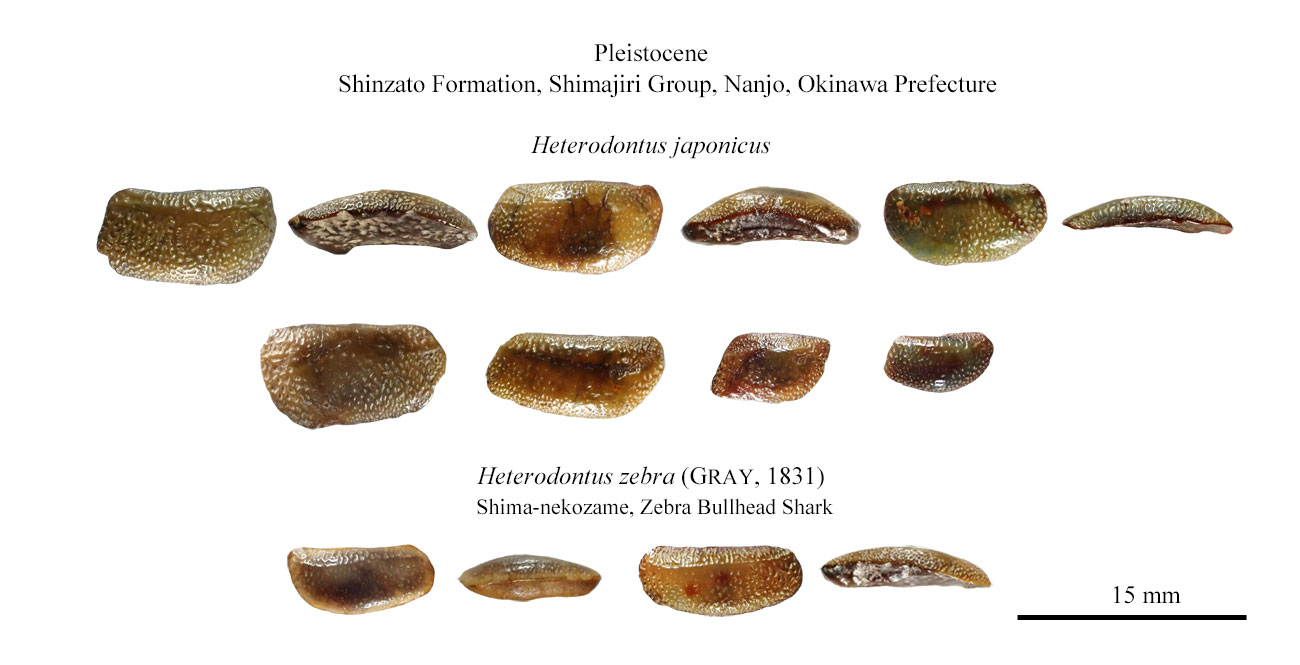
| Plate 3. |

| Plate 4. |
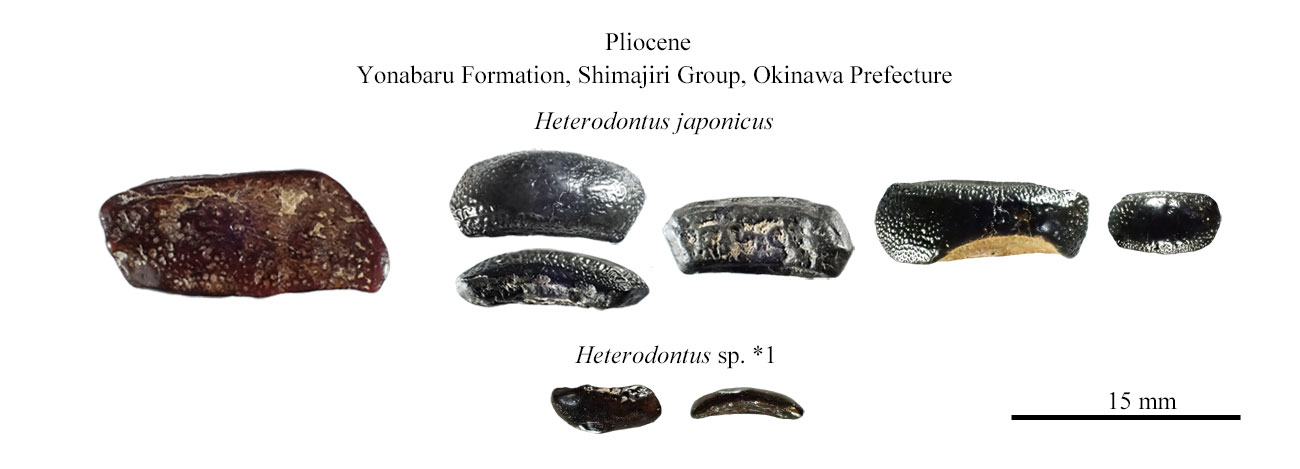
| *1; The shape of this tooth is similar to that of the zebra bullhead shark, but the pattern on the occlusal face is more delicate than that of the zebra bullhead shark. |
| Plate 5. |
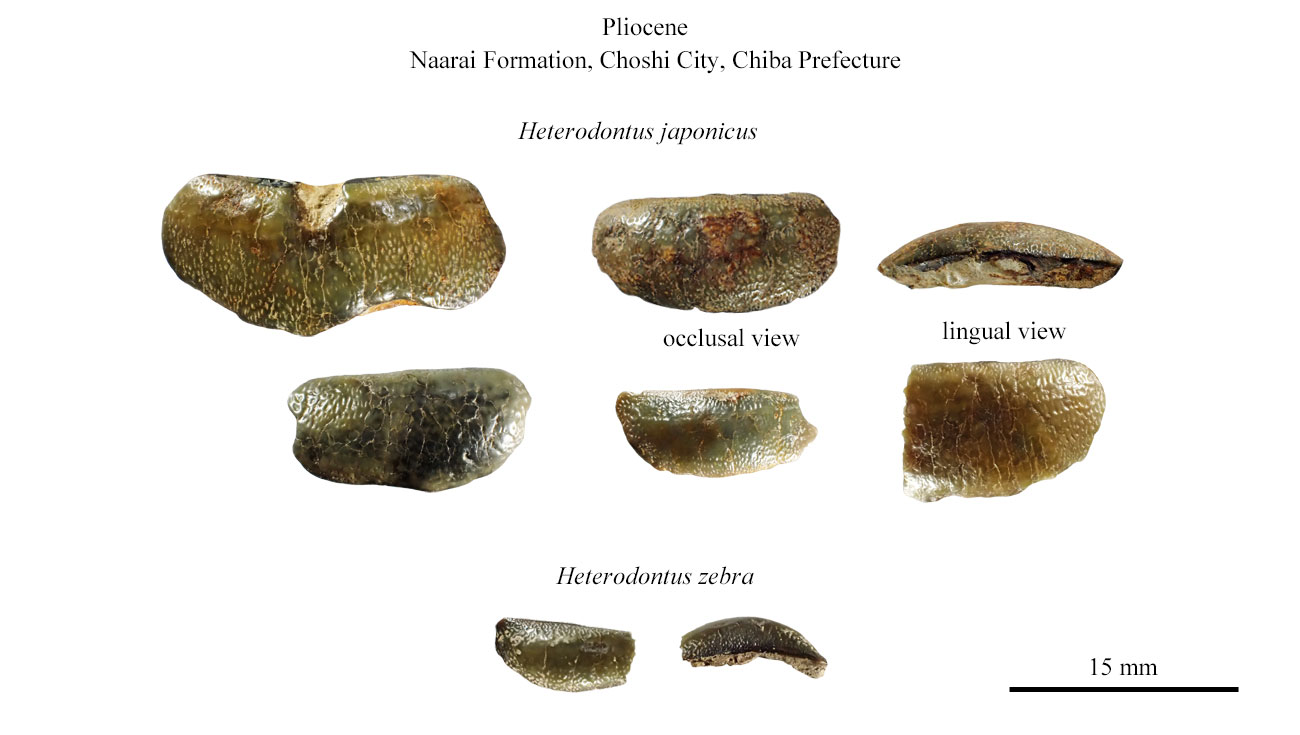
| Two species of the extant bullhead sharks are known to occur in the waters around Japan. The Japanese bullhead shark is found in the coastal waters south of Hokkaido. The zebra bullhead shark is found in the coastal waters farther south, but is rarer than the Japanese bullhead shark. Both species are found in fossil localities since the Pliocene, but the Japanese bullhead shark is more common and the bullhead shark is still rare. |
| Plate 6. |

| Plate 7. |
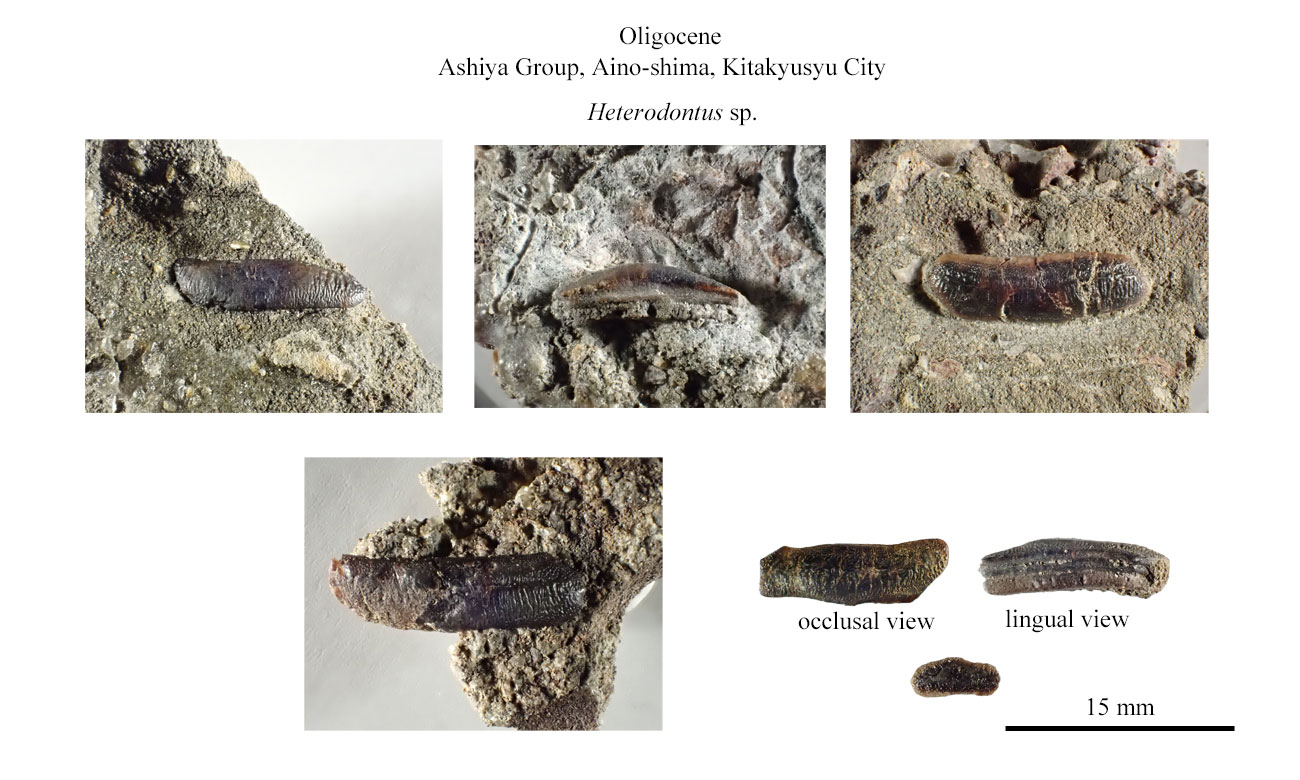
| Plate 8. |

| Plate 9. |
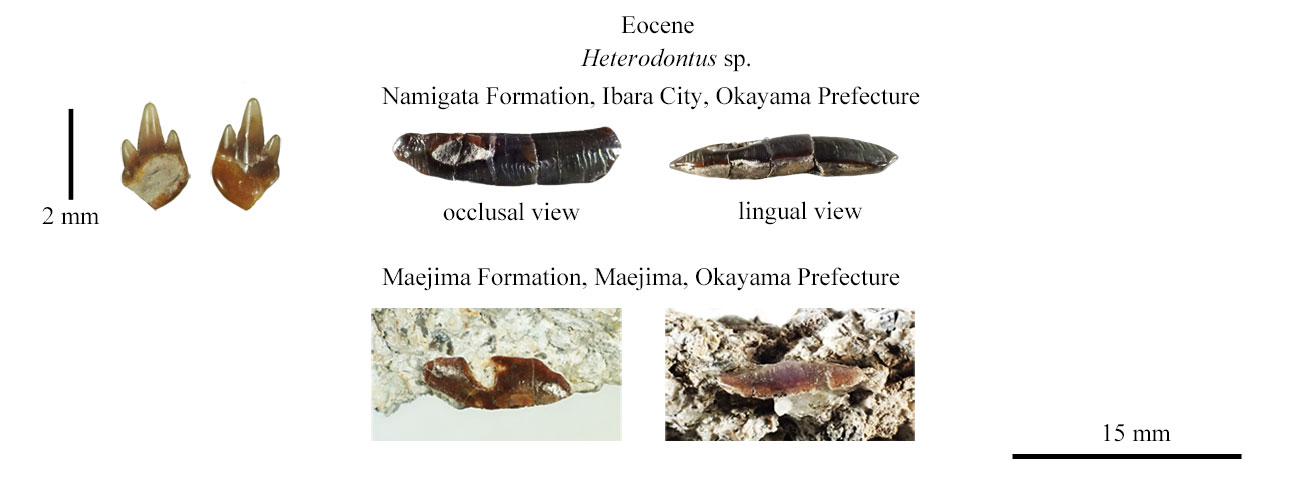
| 20230629 |
Heterodontus. Heterodontus II. Tooth size
Back & Forth